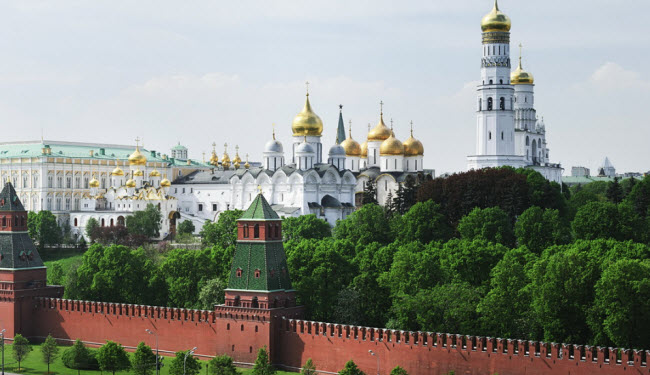The Kremlin is a fortified complex located in the heart of Moscow, the capital of Russia. Founded by the Rurik dynasty, it includes five palaces, four cathedrals, and a wall with its famous towers. Within the complex stands the Grand Kremlin Palace, which formerly served as the residence of the Tsar and continues to hold this role as the official residence of the President of the Russian Federation. The Kremlin overlooks the Moskva River to the south, Saint Basil’s Cathedral and Red Square to the east, and Alexander Garden to the west. The term “Kremlin” is often used to refer to the Russian government or high-level officials, and it also denotes the study of Soviet and Russian political policies. Due to its historical significance, the Kremlin is open to the public, offering individual and group tours. Its museum attracts around 3 million visitors annually, showcasing collections of weapons, Tsarist cannons, bells, and various artifacts including sculptures and paintings that highlight the country’s heritage.
History of the Kremlin
Before the Kremlin’s construction, the site was continuously inhabited by Finno-Ugric peoples from the 2nd century BC. In the early 11th century, Eastern Slavs occupied the southwestern part of the Borovitsky Hill, where “Vyacheslav” built a fortified structure (known locally as “grad”). This structure stood where the Niglina River flows into the Moskva River. In 1156, Prince Yuri Dolgoruky significantly expanded it, but it was destroyed by the Mongols in 1237. It was rebuilt with oak in 1339, and by the 14th century, it was known as “Grad Moscow” until the term “Kremlin” was first recorded in 1331 (though etymologist Max Vasmer mentions an earlier appearance in 1320). The term “Kremlin” means “fortress within a city” in Russian.
Between 1366 and 1368, Dmitry Donskoy replaced the oak walls with a robust limestone fortress, which forms the basis of the current walls. This fortress withstood a Tatar siege. Dmitry’s son Vasily continued to build churches and monasteries within the Kremlin, including three cathedrals, with his widow Yevdokia completing the fourth. Grand Prince Ivan III organized a major reconstruction of the Kremlin, inviting skilled Renaissance architects from Italy, including Pietro Antonio Solari, who designed the new Kremlin walls and towers, and Marcus Ruffus, who designed the prince’s new palace. During his reign, three cathedrals and the Church of the Deposition were constructed. The tallest building in the city was the Ivan the Great Bell Tower, built between 1505 and 1508, and its height was increased to its current level by 1600. The Kremlin walls, as they appear today, were constructed between 1485 and 1495.
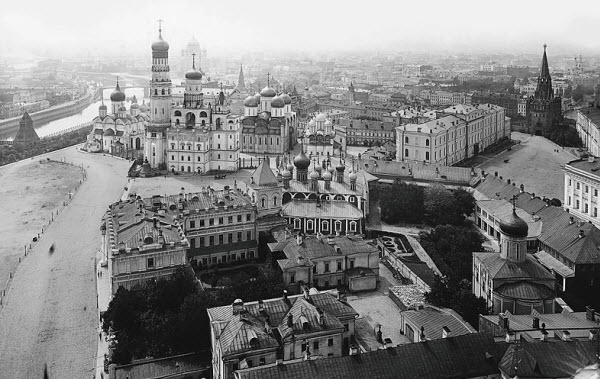
After the completion of the new walls and churches, Prince Ivan issued a decree prohibiting the construction of buildings in the area immediately adjacent to the fortress. The Kremlin was separated from the neighboring walled trading city of Kitai-gorod by a 30-meter-wide moat, on which Saint Basil’s Cathedral was later built. During the reign of Ivan the Terrible, he renovated some of his grandfather’s palaces, adding a new palace and cathedral for his sons. During the Time of Troubles, Polish forces occupied the Kremlin for two years, from September 1610 to October 1612, until it was liberated by the army of Dmitry Pozharsky and Kuzma Minin, paving the way for Mikhail Romanov to become the new Tsar. In 1682, a popular uprising in Moscow led Tsar Peter to flee the Kremlin, and he decided to abandon it in favor of Saint Petersburg as the new capital.
Although the Kremlin was still used for coronation ceremonies, it was neglected until 1773 when Catherine the Great commissioned architect Vasily Bazhenov to build her new residence there. Bazhenov designed a new classical style, demolishing many churches and palaces, as well as part of the Kremlin wall, and replacing them with new buildings. Construction was delayed due to a lack of funds, and after several years, architect Matvey Kazakov oversaw the rebuilding of the damaged wall sections and constructed spacious, luxurious offices for the Senate, which were adapted for use as the main working space of the Russian ruler. Throughout the imperial period, from the early 18th century until the late 19th century, the Kremlin walls were traditionally painted white in keeping with fashion.
In early September to late October 1812, French forces occupied the Kremlin. When Napoleon Bonaparte withdrew from Moscow, he ordered the complete demolition of the building, which suffered extensive damage. Fires raged for three days, but rain lessened the damage. Restoration began between 1816 and 1819 under the supervision of Osip Bove. During the remainder of Alexander I’s reign, many old buildings were renovated in a Gothic style, while others that were difficult to restore were demolished.
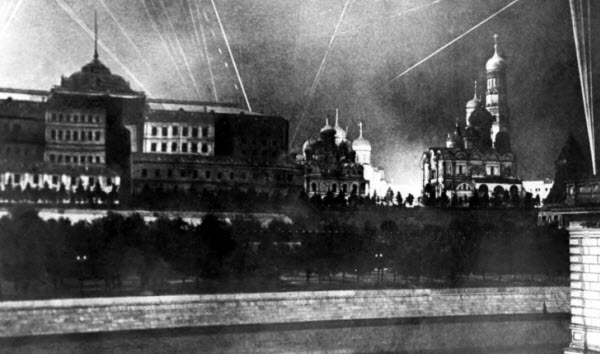
With the Bolshevik Revolution and the overthrow of the Russian Tsar, the Soviet government moved from Petrograd (now Saint Petersburg) to Moscow on March 12, 1918. Vladimir Lenin chose the Senate building in the Kremlin as his residence, and Joseph Stalin also had his private quarters there, keen on removing all traces of the Tsarist regime from his headquarters. The cathedrals within the complex were dismantled to make way for the military academy. During World War II, in an effort to confuse German pilots, the towers were repainted in different colors and covered with wooden tents, while the roofs and facades were painted a rusty brown to blend in with traditional city rooftops. The gravel-paved ground was covered with sand. After the war, the Soviet government residence was closed to tourists until 1955, and the Kremlin was opened to foreign visitors during Nikita Khrushchev’s tenure. The Kremlin Museums were established in 1961, and the complex was among the first Soviet heritage sites listed as a World Heritage Site in 1990.
The official Kremlin Palace (known as the Kremlin Congress Palace) was constructed under Nikita Khrushchev’s commission between 1959 and 1961 to serve as a venue for Communist Party meetings. The building, covered in white marble with shaded and reflective windows, sparked considerable controversy as it replaced several historic structures.
The Kremlin Building
The current walls and towers of the Kremlin were built by Italian masters from 1485 to 1495, covering an area of 275,000 square meters with a total length of 2,235 meters. The height ranges from 5 to 19 meters, depending on the terrain, and the thickness varies between 3.5 and 6.5 meters. Originally, there were eighteen towers, but the number increased to twenty by the 17th century. The tallest tower is the Troitskaya, which was built to its current height of 80 meters in 1495.
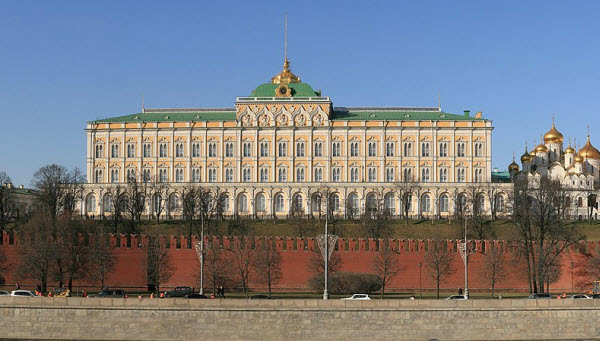
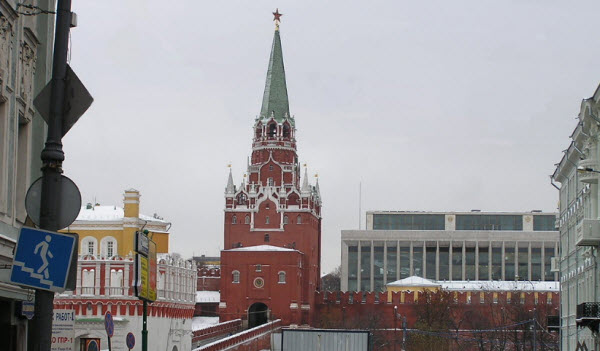
At the heart of the Kremlin is Cathedral Square, surrounded by six buildings, including three cathedrals. The first is the Dormition Cathedral, completed in 1479, which served as the main church in Moscow, where all Tsars were crowned and many important archbishops and patriarchs were buried. The second is the Assumption Cathedral, with its three golden domes, finished in 1489, later rebuilt with nine domes. To the southeast of the square is the third cathedral, the Archangel Michael Cathedral, completed in 1508, where nearly all Moscow’s kings are buried.
The prominent structure is the Ivan the Great Bell Tower, located in the northeast corner of the square, considered the center of Moscow. Completed in 1600 at a height of 81 meters, it was the tallest building in the city until the Russian Revolution, with the construction of taller buildings prohibited. It was adorned with 21 bells that rang alarms if any enemy approached. The French destroyed the upper part of the tower during the Napoleonic invasion, but it was rebuilt. The Tsar Bell, the world’s largest bell, sits on a base beside the tower.
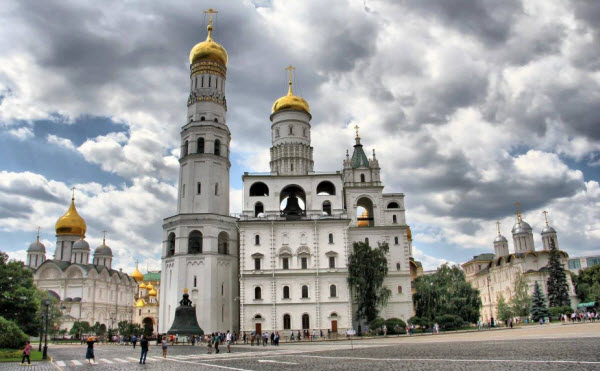
In the northern corner of the Kremlin stands the Arsenal, built for Peter the Great in 1701, while the southwestern part of the building houses the Armoury Chamber, constructed in 1851 in Renaissance style and now serving as a museum for Russian state treasures.
Recent Developments
Due to traffic congestion caused by official motorcades in Moscow, Russian President Vladimir Putin authorized the construction of a helicopter pad within the Kremlin, completed in May 2013. This facility allows the Russian President to travel to and from the Kremlin by helicopter, with the site carefully chosen to avoid any threat to the Kremlin’s structures.
